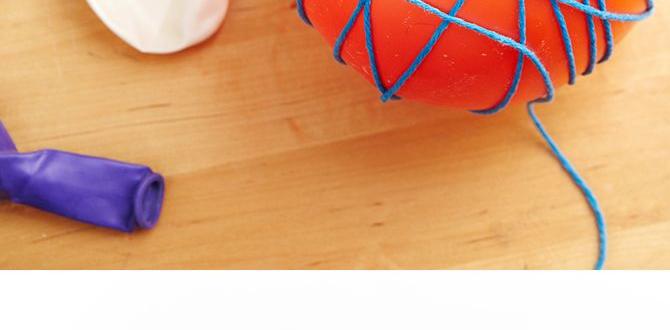Boost your nail gun’s power and precision with simple accessories. Discover how the right add-ons make your DIY projects easier, safer, and result in a more professional finish. Let’s unlock your tool’s full potential!
Hey there, fellow DIYers and woodworking enthusiasts! Jack Shaffer here, your go-to guy for all things nail guns. Ever feel like your nail gun, trusty as it might be, could give you just a little more? You know, faster drives, cleaner finishes, less frustration? Many beginners feel the same way. You’ve got the nailer, you’re ready to build, but sometimes things just don’t go as smoothly as you’d hoped. Don’t worry, it’s not you – it’s often about having the right gear. We’ll explore how a few smart, readily available nail gun accessories can transform your tool’s performance, making your projects a breeze and boosting your confidence with every nail. Ready to level up your DIY game? Let’s dive in and see how these simple additions can make a world of difference!
Table of Contents
Why Nail Gun Accessories Matter for Better Performance
Think of your nail gun like a car. The car itself is great, but imagine how much better it performs with the right tires, a tune-up, and maybe even a performance chip. Nail gun accessories are similar – they’re the tune-ups and upgrades for your tool. They aren’t just fancy extras; they are functional enhancements designed to optimize how your nailer operates.
Many DIYers start with the basic nail gun that comes with a starter kit. This is perfectly fine for getting started! However, as you tackle more projects and encounter different materials or situations, you might notice limitations. Perhaps you’re getting more nail jams, sinking nails inconsistently, or leaving marks on delicate surfaces. These are signs that a simple accessory might be the perfect solution.
Understanding these accessories can demystify their benefits and empower you to make informed choices. We’re going to break down the most impactful accessories that can truly improve your nail gun’s performance, ensuring your projects are completed efficiently, safely, and with a beautiful, professional finish.
Essential Nail Gun Accessories to Boost Performance
Let’s get down to brass tacks. There are several key accessories that can significantly enhance your nail gun’s capability. We’ll look at what they are, what they do, and why they’re worth considering for any serious DIYer.
1. No-Mar Tips and Nose Covers
What they are: These are soft, often rubber or plastic attachments that fit over the nail gun’s nose (where the nail comes out).
Why they boost performance:
Prevent Surface Damage: This is their primary function. When you’re working with soft woods, veneers, or pre-finished materials, the metal nose of a nail gun can leave unsightly dents or marks. A no-mar tip acts as a protective buffer, ensuring a clean, unblemished finish.
Improved Placement: The soft material can sometimes provide a slightly better grip on angled surfaces, helping to keep the nail gun from slipping and ensuring more accurate nail placement.
Versatility: Many nail guns come with a standard nose, but using no-mar tips makes them suitable for a wider range of delicate applications.
When to use them: Ideal for installing trim, cabinet doors, furniture work, and any project where aesthetics are paramount and you need to protect the surface from dents.
2. Belt Hooks and Holsters
What they are: Attachments that clip onto your tool or a dedicated holster that attaches to your belt.
Why they boost performance:
Convenience and Safety: While not directly impacting the nail driving, these accessories drastically improve workflow and safety. Having a handy place to hang your nailer between drives means less fumbling, less potential for dropping the tool, and less strain from holding it.
Increased Efficiency: Quick access to your nail gun saves time. You can move around your project site more fluidly without constantly setting the tool down or carrying it awkwardly.
Reduced Fatigue: Constantly holding a nail gun, even for short periods, can lead to fatigue. A belt hook or holster allows you to easily secure the tool when not in use, reducing arm and shoulder strain.
When to use them: For any project where you move around a lot, work at heights, or have to repeatedly pick up and put down your nailer. Think framing, roofing, or extensive trim work.
3. Swivel Air Couplers (for Pneumatic Nailers)
What they are: These are fittings that go between your air hose and the nail gun’s air inlet. They allow the hose to rotate freely.
Why they boost performance:
Freedom of Movement: The most significant benefit is eliminating hose tangles and kinks. This makes maneuvering the nail gun much smoother, especially in tight spaces.
Reduced Strain: No more fighting with a stubborn hose! This reduces physical strain on your wrist and arm.
Extended Hose and Tool Life: By preventing kinks and twists, swivel couplers can help prevent damage to your air hose and the air fitting on your nailer.
When to use them: Absolutely essential for anyone using a pneumatic nailer. They are a small investment that pays off in comfort and frustration reduction. For a deeper dive into air system components, the Occupational Safety and Health Administration (OSHA) offers valuable resources on compressed air safety, which includes understanding how hoses and fittings impact your work: https://www.osha.gov/compressed-air
4. Extended Magazine Attachments
What they are: Some nail guns can accept larger magazine attachments, allowing them to hold more nails at once.
Why they boost performance:
Fewer Reloads: This is a game-changer for large projects. More nails in the magazine mean fewer interruptions to stop and reload.
Increased Speed and Efficiency: Imagine framing an entire wall or laying a deck without having to pause for reloads constantly. This accessory directly translates to faster project completion.
Consistent Workflow: Minimizing interruptions keeps your momentum going, which can lead to fewer mistakes and a more enjoyable building experience.
When to use them: Perfect for large-scale projects like framing walls, building decks, installing siding, or any job where you’ll be driving hundreds or thousands of nails.
5. Depth of Drive Adjusters
What they are: Many nail guns have a setting or an adjustment wheel that controls how deep the nail is driven into the material.
Why they boost performance:
Precise Nail Setting: This is crucial for achieving a professional look. You can fine-tune how flush the nail head sits. Too deep, and you create a large hole or break through the surface. Too shallow, and the nail head sticks out, looking unfinished and potentially snagging.
Material Adaptability: Different woods and materials require different driving depths. An adjuster lets you quickly adapt your nail gun to various thicknesses and densities of wood without changing your air pressure.
Prevents Over-Driving: On softer materials, over-driving nails can split the wood or create unsightly dimples. The depth adjuster helps prevent this.
When to use them: Always! This feature is invaluable for any project where the nail head needs to be set correctly – trim, molding, cabinetry, furniture, and even framing if you want the nail heads slightly countersunk.
6. Nail Quivers (for Specific Nail Gun Types)
What they are: For certain types of nailers, like framing nailers, a “quiver” might refer to an extended magazine or a convenient way to carry spare nails. More commonly, this term might be used informally for how the nails are held. However, the functional accessory is an extended magazine.
Why they boost performance:
Holds More Nails: Similar to extended magazines, these increase the nail capacity, leading to fewer reloads.
Reduces Downtime: Less time spent refilling the nail magazine means more time spent building.
When to use them: Large construction projects such as framing houses, building sheds, or large decks where rapid nailing is required.
7. Air Filters and Regulators (for Pneumatic Nailers)
What they are:
Air Filter: Removes moisture, oil, and debris from the compressed air supply.
Air Regulator: Controls and maintains a consistent air pressure output from the compressor to the nail gun.
Why they boost performance:
Tool Longevity: Dirty or wet air can damage internal nail gun components, leading to jams, reduced performance, and premature wear. Filters keep your tool running smoothly for longer.
Consistent Firing: Fluctuating air pressure can cause inconsistent nail depth. A regulator ensures a steady “push” for every nail, leading to more reliable performance.
Optimal Power: Setting the correct air pressure with a regulator ensures your nail gun has enough power to drive nails effectively without over-stressing the tool. It’s about finding that sweet spot. For guidelines on safe and effective air pressure in industrial settings, which can translate to DIY best practices, check out resources from the National Safety Council: https://www.nsc.org/ (while not directly on air tools, general industrial safety principles apply).
When to use them: Crucial for maintaining pneumatic nailers. An inline filter/regulator unit is a wise investment for anyone using their compressor regularly.
Table: Accessories for Different Nail Gun Uses
To give you a clearer picture of which accessories are most helpful for common tasks, let’s look at this table.
| Project Type | Most Beneficial Accessories | Why They’re Important |
|---|---|---|
| Trim & Molding Installation | No-Mar Tips, Depth of Drive Adjuster, Swivel Air Coupler (pneumatic) | Prevents damage to delicate surfaces, ensures flush nail heads for a clean look, and provides comfortable maneuverability. |
| Framing & Construction | Extended Magazine, Belt Hook/Holster, Air Filter & Regulator (pneumatic) | Maximizes nailing speed with fewer reloads, allows for easy tool access and mobility on site, and ensures consistent tool performance and longevity. |
| Cabinetry & Fine Woodworking | No-Mar Tips, Depth of Drive Adjuster, Swivel Air Coupler (pneumatic) | Protects finishes, allows for precise nail placement (often countersunk for filling), and offers smooth handling for detailed work. |
| Deck Building | Extended Magazine, Belt Hook/Holster, Air Filter & Regulator (pneumatic) | Speeds up the process of driving hundreds of deck screws (or nails if using a framing nailer for joists), keeps the tool handy on a large surface, and ensures reliability. |
How to Choose the Right Nail Gun Accessories
Picking out accessories might seem straightforward, but a little thought goes a long way to ensure you get the most bang for your buck.
1. Identify Your Nail Gun Type
Pneumatic (Air-Powered): If your nailer runs on compressed air, you’ll benefit most from accessories related to air supply (couplers, filters, regulators) and those that enhance general use (no-mar tips, depth adjusters).
Cordless (Battery-Powered): These nailers rely on battery power. You won’t need air-related accessories, but depth adjusters, no-mar tips, and belt hooks are still very relevant.
Electric (Corded): Similar to cordless, focus on the non-air accessories.
2. Consider Your Typical Projects
Are you working with soft wood or delicate veneers? No-mar tips are a must.
Do you build large structures like sheds or decks? Extended magazines and belt hooks will save you considerable time and effort.
Is precision critical for a professional finish? A depth of drive adjuster is essential.
3. Check Compatibility
No-Mar Tips: These are often specific to nail gun brands or models. Check the tip diameter and design to ensure a snug fit.
Swivel Couplers: These use standard threading (like 1/4-inch NPT). Ensure the threads match both your hose and your nail gun’s air inlet.
Extended Magazines: These are usually specific to the nail gun model. Manufacturers often list compatible accessories.
4. Read Reviews and Ask for Recommendations
Like with any tool purchase, seeing what other users say can be incredibly helpful. Online reviews can highlight durability, ease of use, and how well an accessory performs in real-world scenarios. Don’t hesitate to ask fellow woodworkers or staff at your local hardware store for their favorite accessories.
5. Don’t Overbuy
It’s tempting to get every accessory you see, but start with what addresses your biggest pain points or enhances your most frequent projects. You can always add more later.
Installing and Using Nail Gun Accessories: A Quick Guide
Most accessories are designed for easy installation. Here’s a general idea of how you’ll typically use them:
For No-Mar Tips:
1. Unplug or Disconnect Air: ALWAYS ensure your nail gun is not connected to power (battery removed) or air (hose detached) before installing any accessories. Safety first!
2. Slide On: Most no-mar tips simply slide over the existing nose of the nail gun. Some might have a small retaining clip or screw.
3. Test: After installation, test fire into scrap wood to ensure it’s securely attached and functions correctly.
For Swivel Air Couplers:
1. Disconnect Air: Ensure the air hose is disconnected from the compressor and the nail gun.
2. Unscrew Old Fitting: Unscrew the existing coupler from the end of your air hose.
3. Attach New Coupler: Wrap the threads of the swivel coupler with a few turns of Teflon tape (pipe thread tape) for a better seal. Screw the coupler onto the air hose.
4. Connect and Test: Reconnect the hose to the nail gun and turn on your compressor. Check for leaks.
For Depth of Drive Adjusters:
These are usually built into the nail gun. You’ll typically find a wheel or paddle near the nose.
Experiment: Adjust the setting and fire into scrap wood. Then adjust again. You’ll quickly learn how each increment affects the nail depth. It’s often best to set the depth slightly shallow and then fine-tune to be perfectly flush.
For Belt Hooks and Holsters:
Belt Hooks: These often screw into an existing threaded mounting point on the nailer’s body or handle. They might come with your tool or be an aftermarket purchase from the manufacturer.
* Holsters: These are worn on your belt and designed to precisely fit your specific nail gun model. Simply slide the tool into the holster.
FAQ: Your Beginner Questions Answered
Q1: Do I really need special tips for my nail gun?
Yes, especially if you’re working with soft woods, painted surfaces, or anything where you want a pristine finish. A standard metal nailer nose can easily leave dents or marks. No-mar tips are inexpensive and save a lot of frustration by protecting your material.
Q2: How much air pressure should I use with my pneumatic nailer accessories?
Always refer to your nail gun’s manual for the recommended PSI (pounds per square inch) range. A good rule of thumb for basic trim work is often between 70-90 PSI. For heavier framing, you might need more. An air regulator is key to maintaining a consistent and safe pressure. Too little pressure causes weak drives, and too much can damage the tool or your work.
Q3: Are cordless nail gun accessories different from pneumatic ones?
Yes, significantly. Cordless nailers don’t use air, so they don’t need air couplers, filters, or regulators. However, accessories like no-mar tips for the nose and depth-of-drive adjustment wheels are still very relevant and important for achieving good results with cordless models.
Q4: Can I share accessories between different brands of nail guns?
It depends on the accessory. Air couplers and filters have standard thread sizes and are often interchangeable between brands. However, no-mar tips and extended magazines are usually designed for specific nail gun models or brands. Always check compatibility before purchasing.
Q5: How do I know if my nail gun’s depth adjustment is working correctly?
The best way is to test fire into scrap pieces of the material you’ll be using. Set the depth adjustment, drive a nail, and examine how deep it is. Then, adjust and test again. You’re looking for the nail head to be flush with the surface or slightly countersunk, depending on whether you plan to fill the nail hole later.
Q6: What’s the main benefit of a swivel air coupler?
The main benefit is preventing your air hose from twisting and kinking. This makes maneuvering the nail gun much easier, reduces physical strain on your wrist and arm, and can extend the life of your air hose and the nailer’s air fitting.
Q7: If I only get one accessory, what should it be?
For most DIYers, a set of no-mar tips is the most impactful single accessory. They directly improve the appearance of your finished work, which is often the biggest concern for homeowners tackling trim, furniture, or cabinetry projects. If you use a pneumatic nailer extensively, a swivel air coupler is a close second for sheer comfort and ease of use.




